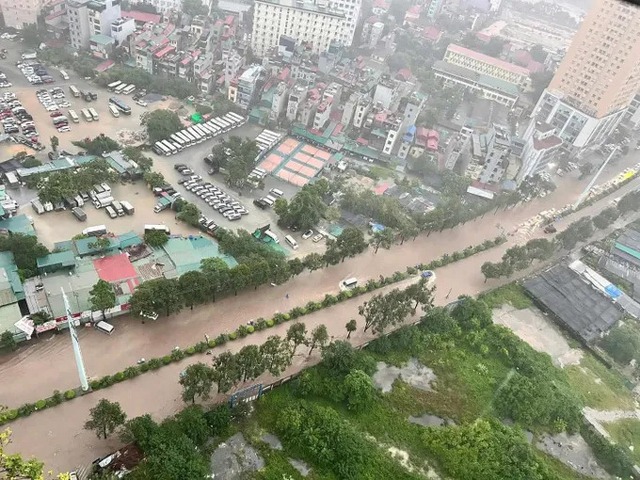Typhoon Kajiki claims three lives in Viet Nam
VGP - Typhoon Kajiki has caused three deaths and 13 injuries, reported the Department of Dyke Management and Natural Disaster Prevention and Control.

Many streets in Ha Noi are submerged by heavy rainfall overnight and into the morning due to the circulation of Typhoon Kajiki
A large number of houses were severely damaged. Among them, eight houses collapsed, over 6,800 unroofed, and more than 3,000 inundated.
At least 31,000 hectares of rice, 2,700 hectares of crops, and 2,200 hectares of fruit trees have been submerged. Nearly 20,000 trees have been uprooted or broken and 160 hectares of aquaculture have been flooded and overflowed.
According to the National Centre for Hydrometeorological Forecasting, Typhoon Kajiki, the fifth storm to arise in the East Sea this year, weakened into a tropical depression early on August 26 as it moved over central Laos.
Earlier, coastal monitoring stations in Nghe An and Ha Tinh recorded wind gusts of up to Level 15 and sea level rises of 1.66m in Hon Ngu and 1.01m in Sam Son. Northern delta provinces and central ones from Thanh Hoa to Quang Tri reported extremely heavy rains, with accumulations exceeding 600mm in some locations.
Forecasts suggest that through the remainder of August 26, the northern midlands, Red River Delta, and north-central provinces, including Lao Cai, Son La, Thanh Hoa, and Ha Tinh, will continue to experience rainfall between 50–100mm, with some areas seeing over 200mm. There is a heightened risk of extremely heavy downpours, potentially exceeding 100mm in three-hour periods.
In the next six hours, the risk of flash floods, landslides, and ground subsidence remains high, especially in hilly and mountainous regions such as Lang Son.
The public is urged to remain cautious, avoid flooded areas, and stay updated with official advisories./.
